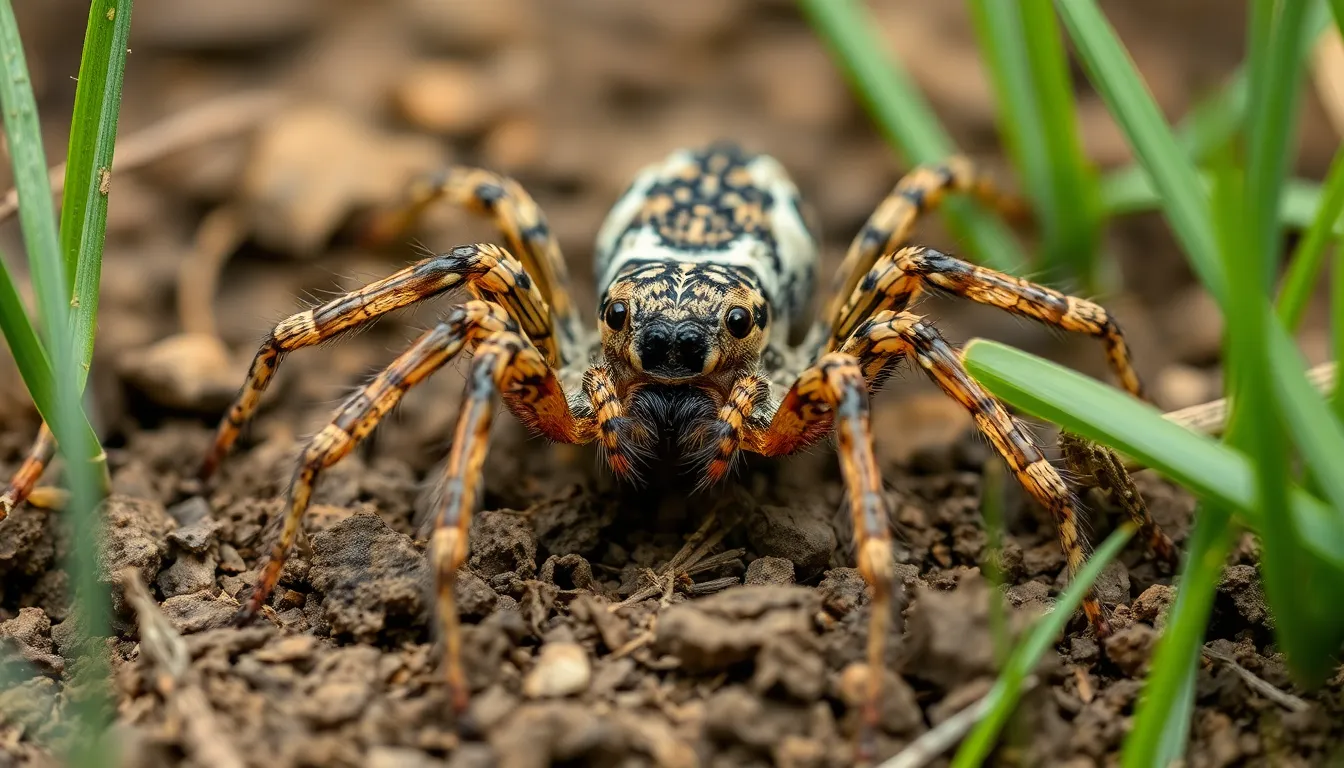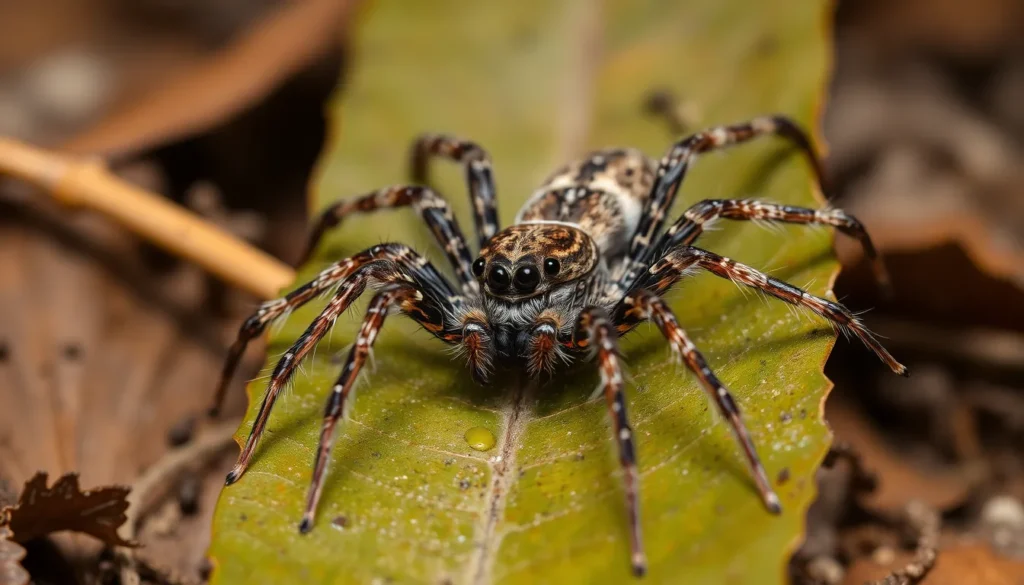Table of Contents
ToggleWhen it comes to creepy crawlies, wolf spiders often take the prize for scaring the socks off people. With their long legs and hairy bodies, they look like the ultimate villains of the insect world. But before you start plotting their demise, let’s clear the air: are these eight-legged creatures truly poisonous? Spoiler alert: it’s not as dramatic as it sounds.
While wolf spiders might not be inviting you to their next venomous tea party, understanding their bite is essential. They may pack a punch with their fangs, but their venom isn’t designed to take down humans. Instead, it’s more about catching dinner than causing chaos. So, let’s dive into the fascinating world of wolf spiders and discover just how dangerous (or not) they really are.
Understanding Wolf Spiders
Wolf spiders possess distinctive traits that set them apart from other spider species. Their robust bodies, covered in hair, and long legs contribute to their intimidating appearance. Typically, they range from 0.5 to 2 inches in length and feature a mix of brown and gray colors, allowing for effective camouflage in natural environments.
Physical Characteristics
Eyes differentiate wolf spiders from many other spider types. They possess eight eyes arranged in three rows, with the central pair being particularly large. This unique configuration enhances their ability to see in low-light conditions. Body coloration varies among individuals, enabling them to blend seamlessly into their surroundings. They also display a distinctive pattern across their bodies, often resembling striped or mottled textures. Such features enable effective hunting and self-defense.
Habitat and Behavior
Wolf spiders thrive in diverse environments, including forests, fields, and gardens. They prefer areas with ample ground cover, offering protection from predators and enhancing hunting success. Active hunters, they rely on speed rather than webs to capture prey, stalking insects and small arthropods. These spiders do not perform elaborate courtship rituals, instead engaging in simple mating behaviors. During the day, they often hide under rocks, leaves, or logs to avoid detection.
Wolf Spider Venom

Wolf spiders possess venom that aids in subduing their prey. This venom primarily contains neurotoxins and enzymes, which assist in digesting the prey’s tissues before consumption.
Composition of Venom
Venom from wolf spiders varies among species, but it generally contains a cocktail of proteins, peptides, and enzymes. These components play roles in immobilizing prey and facilitating digestion. Enzymes break down proteins and fats, while neurotoxins disrupt the nervous system of smaller animals. Different species of wolf spiders may exhibit slight differences in venom composition, affecting how they capture and handle various prey types.
Effects on Humans
Bites from wolf spiders may cause localized pain and swelling, but serious reactions are uncommon. Symptoms typically include redness and mild irritation, resolving within a few days. Allergic reactions may occur in some individuals, but severe complications are rare. Effective treatment options for bites include cleaning the wound and applying ice to reduce swelling. Wolf spider venom holds less danger for humans, showcasing their hunting adaptations rather than a threat to human safety.
Comparing Wolf Spiders to Other Spiders
Wolf spiders often find themselves compared to other spider species due to common fears surrounding their appearances and behaviors.
Common Venomous Spiders
Black widows and brown recluse spiders rank among the most commonly known venomous spiders. Black widow bites can lead to severe symptoms, including muscle pain and cramps. Brown recluse bites may result in necrosis or skin lesions, requiring medical treatment. In contrast, wolf spider venom plays a minor role in human health. Its primary function is to subdue and digest prey rather than inflict harm on humans.
Misconceptions About Wolf Spiders
Misunderstandings about wolf spiders often lead to exaggerated fears. Some people believe these spiders pose a significant threat to human safety. They mistake wolf spider bites for more severe incidents caused by venomous spiders like the black widow. Although wolf spiders can bite, such occurrences are rare, and reactions are generally mild. Educating the public about wolf spider behavior and their non-aggressive nature helps dispel these myths effectively.
Safety and Prevention
Understanding wolf spiders helps in avoiding unwanted encounters. With their distinctive features, identifying them becomes easier.
Identifying Wolf Spiders
Wolf spiders possess hairy bodies and long legs, making them visually striking. Sizes can range from 0.5 to 2 inches, featuring shades of brown and gray for effective camouflage. Their eye arrangement stands out, as eight eyes arranged in three rows enhance their vision. These spiders often hide under rocks or leaves during the day. Recognizing these characteristics can prevent confusion with more dangerous species. Observing their movement can also provide clues; wolf spiders are active hunters, showcasing quick, agile behaviors.
Tips for Avoiding Bites
Avoiding bites from wolf spiders is straightforward with some precautions. Keeping living spaces clean and clutter-free minimizes hiding spots. Seal cracks and gaps in windows and doors to deter entry. Wearing gloves when gardening prevents accidental encounters. Additionally, shaking out clothing or shoes before wearing them helps ensure no hiding spiders are present. Maintaining outdoor areas by trimming vegetation reduces the likelihood of attracting these spiders. Staying aware of surroundings while enjoying nature can also decrease risks significantly.
Wolf spiders are often misunderstood due to their appearance and hunting behavior. While they possess venom, it’s not a threat to humans and serves primarily to capture prey. The localized pain and swelling from bites are typically mild and resolve quickly. Recognizing their unique traits and understanding their role in the ecosystem can help alleviate fears. By taking simple precautions, individuals can coexist peacefully with these fascinating creatures. With a little knowledge, the misconceptions surrounding wolf spiders can be dispelled, allowing for a greater appreciation of their place in nature.







